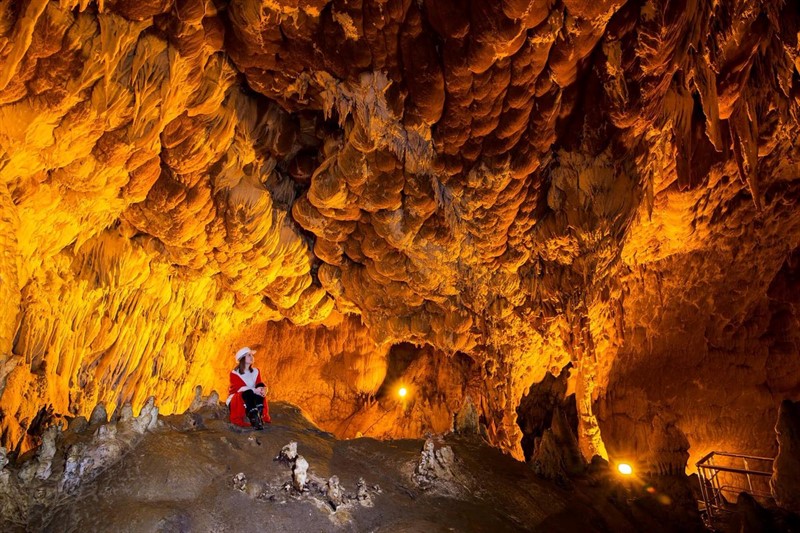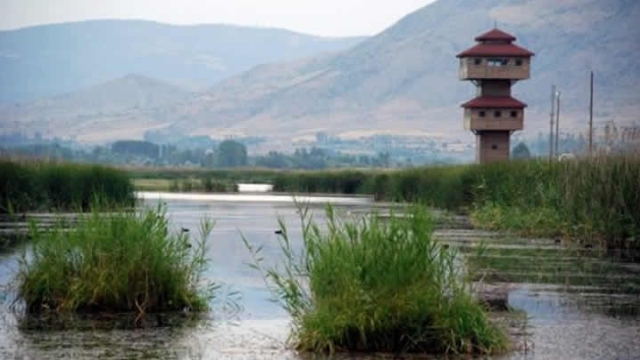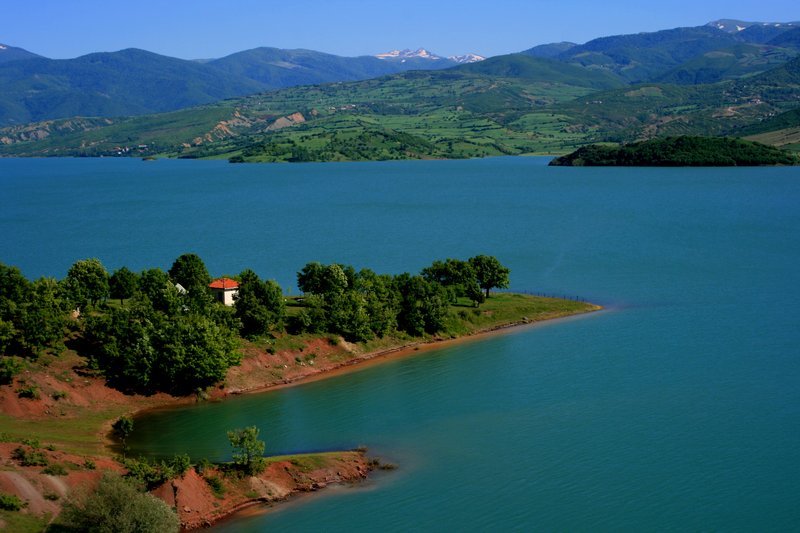Tokat is a rare Anatolian city that preserves its historical and cultural heritage and natural beauties. It is possible to trace the hidden history of Anatolia in the ancient cities of Komana and Sebastopolis, and in the towns of Merkez, Niksar, Zile and Pazar. The 1500-year-old Tokat Castle, which sits on top of a magnificent and frightening rock with its head tower, is the first settlement area of today's city center.
Since the arrival of the Turks in Anatolia, the traces of the works put forward in the name of architecture and the cultural and economic life of the city in the past can be seen in 900 steps, 900 years journey. Çukur (Yagibasan) Madrasa built in the 12th century; It is one of the first closed courtyard Anatolian Madrasahs built in the Turkmen region. Taşhan, Devecihan, Paşahanı, Yazmacılar Han and Arastalı Bedesten in this region; It is among the proofs of the economic vitality of the city throughout history. Among these structures, Taşhan is among the largest city inns of Anatolia and among the five most beautiful inns of Turkey. In the city center, there are also Garipler Mosque, the oldest mosque in Anatolia, and Gülbahar Hatun Mosque, one of the most beautiful mosques of Anatolia from the 15th century, built by Sultan Bayezid II in the name of his mother. It is possible to see the traditional houses of the late Ottoman period, which have survived to the present day, on Halit Sokak and Bey Sokak. The only and most beautiful wooden mevlevihane that has survived with all its annexes in the world today serves as the Mevlevihane Museum. The ruins of the ancient city of Sebastopolis (one of the five big cities of the Black Sea, on the east-west and north-south route during the Roman period and the rich ancient city with the authority to mint money) and Komana (the autonomous city of the Hellenistic period, which was the religion and trade center of the Mithridates Kingdom in Northern Anatolia) have survived until today.
Zile is among the oldest settlements in Anatolia. In Zile Castle, which is the only known filling castle in Anatolia, Caesar said his historical word (veni-vidi-vici) after the Zela War. By preserving the traditional Turkish housing texture where 3600 buildings are together; Zile has become the district with the most traditional Turkish residences in Turkey today. According to the famous geographer Strabon, the first known water mills in Anatolian history were built in Niksar on the Kelkit Stream during the Mithridat Kingdom. In the 17th century, Evliya Çelebi complimented Niksar, who was the capital of the Danişmendoğulları Principality, one of the first Turkish Principalities in Anatolia, with the words "Paradise is either above or below Niksar". The oldest structure of Niksar that has survived to the present day is Niksar Castle, which was built on a steep rock and is the second largest castle in Turkey. Yağıbasan Madrasa, which contains many works and is the first medical school of Anatolia, comes to the fore.
Located in an unpolluted area, Tokat has natural formations such as caves and lakes, thermal springs, and wildlife protection areas for the development of alternative tourism. Shown among the largest caves in the world, Ballica Cave is among Turkey's 28 geological heritage sites. Reşadiye Zinav Lake and Kaz Lake Wildlife Protection Area, declared as tourism centers, as well as Almus Dam Lake are undiscovered natural wonders in Tokat. In Tokat, where there are 510 works registered by the Cultural and Natural Heritage Preservation Regional Directorate, 262 of these works are examples of civil architecture, 117 are religious buildings, 70 are cultural buildings, 16 are natural assets, 4 are commercial building and 1 is military building. There are 112 archaeological sites, 3 urban sites, 2 natural sites and 1 historical site in the province, which has 118 protected areas.
BALLICA CAVE

One of the largest and most magnificent caves in the world in Pazar district, Ballıca Cave meets with its visitors with its 680 m length and 8 halls. Although its age is estimated to be 3.4 million years, this unique place, which takes you on a mysterious journey due to its age, is also of great international importance with its original Onion Pendants. While wandering around Ballıca Cave, which is unique in nature, you will not be able to hide your astonishment and your excitement in the cave will never end. The average humidity in the cave exceeds 55% and the average summer and winter temperature varies between 17-19 degrees. It is said that the amount of oxygen inside the Ballıca Cave is higher than the outside, and it is also good for asthma patients. Ballica Cave, which is one of the undiscovered places to visit in our country, is visited by approximately 500 people on holidays. The Ballıca Cave has 8 halls, namely the Pool Hall, the Great Drip Stones Hall, the Mud Hall, the Fossil Hall, the Bat Hall, the Debris Hall, the Columns Hall, and the Mushroom Hall.
KAZ LAKE

The total protected area of Kaz Lake Wildlife Development Area is 1170 hectares and the lake area is 274 hectares. It is 39 km from the city center, 19 km from Turhal district , 11 km from Pazar district, and 23 km from Zile district. Since Kaz Lake is on the migration routes of migratory birds, it provides accommodation for bird species. The migration of migratory birds, which spend their incubation period in Kaz Lake, starts in March and continues until the beginning of May. Towards the end of June, the fry are ready to fly. The first migrations begin and continue in early July. Migratory birds that spend the winter in the lake come in September-October and migrate to the north when the weather starts to warm up in spring. Goose Lake Wildlife Development Area has an aquatic ecosystem and is a nesting and hatching area for native and migratory birds. Although there are 108 kinds of bird species living in the current population within the aquatic ecosystem area, there are changes in the number of species by months throughout the year. Some of these birds are; Magpie, Black Stork, White Stork, Angit, Pied Heron, Gray Heron, Whitetail Wagtail, Great White Heron, Goose Owl, Gumball, Applebash, Cane Cinderella, Grebe, Reed Warbler, Blackbird, Duck Species, Goose Species, Sandpiper, Sparrow, Starling, Scarlet These are species such as rhinoceros, Willow Sparrow, Black Red Tail, Maiden's Bird, Çıvgın, Meadow Pearl. Kaz Lake, located within the borders of Turhal and Pazar districts, is known with the status of Wetlands and is of great importance as it is a Wildlife Development Area. Since there are no industrial establishments around the lake, there is no industrial pollution in and around the lake. There is a visitor house and two bird watch towers in Kaz Lake.
ALMUS DAM LAKE

Almus Dam Lake is one of the most impressive spots of the city where you can enjoy the most beautiful aspects of nature, have a picnic and do water sports. Almus Dam Lake is an important recreation area where people from the surrounding districts have picnics all day long, especially in spring and summer. It is home to foxes, gazelles, pigeons, marten, mountain goats, bears, pigs, quails, blackbirds and turtledoves. There are beech, pine, oak, linden and cedar trees, which create an abundant green area. There are also camping areas in the Almus Dam Lake, which is built on Yeşilırmak and covers an area of 4000 hectares. If you wish, you can camp for a few days in this beautiful nature.
HISTORICAL WORKS

Tokat has hosted many civilizations. Ancient cities dating from the Roman Period are united with the works of the Anatolian Principalities Period and Ottoman Architectural Works. From the clock tower built in 1902 to the Yağıbasan Madrasa built in 1157-1158 during the Danishment period, and the Tokat Castle, which has survived for centuries from the ancient city of Sebastopolis, which is claimed to have been founded in the 1st century BC, it is understood that Tokat is a living history. Buildings belonging to various times and civilizations that have survived to the present day will allow you to travel through history.
TOKAT MUSEUM
Arastalı Bedesten has been used as Tokat Museum since 2012. Arastalı Bedesten is located in the famous Sulusokak in Tokat, east of the Takyeciler Mosque. Evliya Çelebi described this covered bazaar in his famous Travelogue as "It was built in a very orderly manner, like the Aleppo and Bursa bazaars." The Arastalı Bedesten is reminiscent of the covered bazaar section of the Istanbul Grand Bazaar. The columns of the Arastalı Bedesten, which is an architectural work worth seeing, were built with fine mortar and its vaults were highly skilled. An arasta was added to the east and west abutments of the covered bazaar and an important building group was formed.
LIKE MEVLANA SAID, WE HAVE TO GO TO TOKAT

